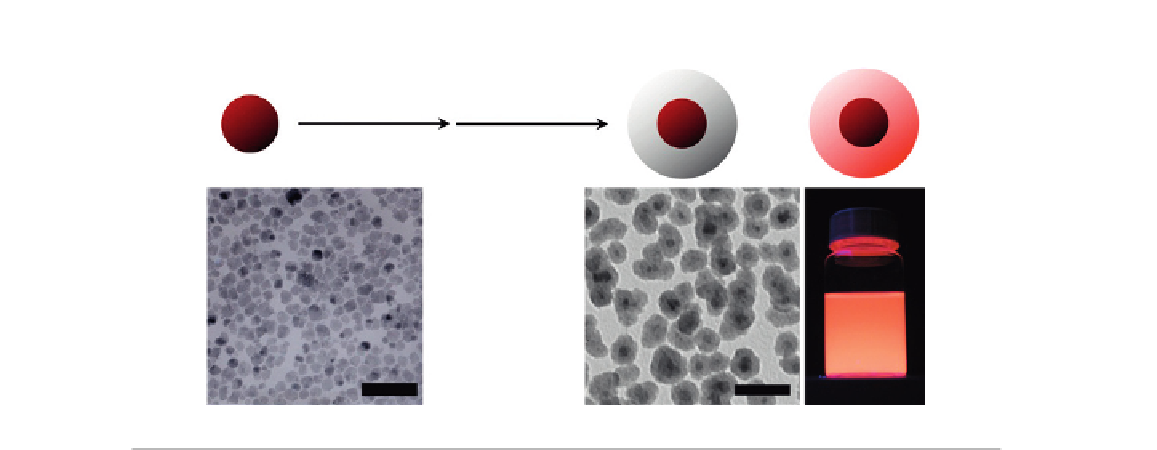Biomedical Engineering Reference
In-Depth Information
(A)
(B)
PVP
TEOS
or
Ethanol transfer
NH
4
OH
or w/dyes
FIGURE 4.4
Synthesis of fluorescent metal core-shell nanoparticles
[20]
. The core, in this case a 20-nm-sized cobalt
ferrite (CoFe
2
O
4
) magnetic particle, is synthesized first (A). To increase biocompatibility the core can be
coated with silica via polyvinyl pyrrolidone (PVP) to form a silica shell on the core surface (middle panel).
A fluorescent property can be added by a chemical bonding group such as an alkoxysilane that is
incorporated into the silica shell (B). All scale bars are 100 nm in TEM images.
physical properties. Particle size might also influence the topography of a surface in the case
of either adhesion or polishing, and biocompatibility as discussed below. Related to more general
biomedical applications, different sized particles may have different capacities to enter cells and
cellular organelles. The mechanisms by which particles are endocytosed are size dependent and
likely influence the manner in which the internalized particles are processed by the cell
[28]
. Once
in the cell, the ability to enter or be excluded from certain organelles is likely highly size depen-
dent. In vivo, size also influences half-life with 6 nm particles rapidly removed by the kidneys
[29]
and particles larger than 200 accumulating in the spleen and liver
[30]
.
4.4.2
Shape
Shape can be controlled by a number of methods; however, varying the concentration of the
primary or secondary surfactant or addition of a secondary silica source, such as aminopropyltri-
methoxysilane (APS), is common. Semiconductor, metal oxide, and metal nanoparticles can be
controlled by changing the ratio of surfactants and precursors, growing under harsh and mild condi-
tions, adding polymers, and so on
[31,32]
. These nanomaterials have crystallinity and because
surfactants are often more interactive with a certain crystalline facet, the less interactive facets will
result in relative faster growth. The nonuniform growth can be manipulated to synthesize nanoma-
terials with different shapes. Silica also has various crystalline forms, such as quartz. Because these
crystalline silicas are formed under high temperature or pressure, referred to as calcination, they
cannot be synthesized by the sol
gel process. Silica amorphously and entropically favors a spheri-
cal shape and therefore silica-based nanomaterials made by the sol
gel process in the absence of

